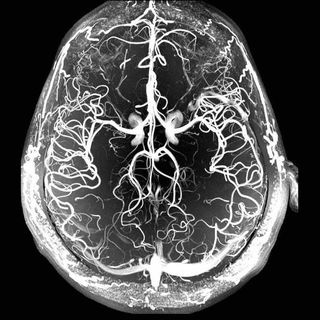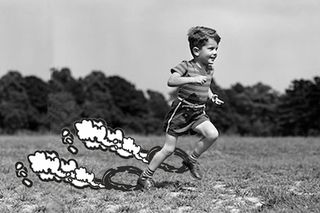
Kids Have the Same Level of Fitness As Endurance Athletes
That’s why we’re all so tired.

It’s 8 pm. You’re exhausted. And your kid, who has literally been running around all day, is still going strong. How is this possible?
Part of it is due to the fact that kids don’t develop the ability to recognize fatigue until middle childhood; instead of realizing they need sleep, their bodies respond by prompting more frenetic behavior. But the other part is the subject of a recent study, published in Frontiers in Psychology, which found that kids’ fitness levels are on par with the fitness of adult endurance athletes. And, unless you’re an actual professional athlete, adults can’t keep up.
“During many physical tasks, children might tire earlier than adults because they have limited cardiovascular capability, tend to adopt less-efficient movement patterns and need to take more steps to move a given distance,” said co-authors Sébastien Ratel, an associate professor in exercise physiology at the Université Clermont Auvergne, France, and Anthony Blazevich, a professor in Biomechanics at Edith Cowan University, Australia. “Our research shows children have overcome some of these limitations through the development of fatigue-resistant muscles and the ability to recover very quickly from high-intensity exercise.”
While previous research conducted by the duo leaned toward a similar conclusion, until recently they hadn’t sufficient evidence to prove their hypothesis.
This latest study focused on three sets of people: young boys, aged 8 to 12 years; untrained adults; and adult endurance athletes. The young boys and untrained adults were not regulars when it came to long exercises. In contrast the third group consisted national-level competitors at triathlons and long-distance running and cycling. Each group was asked to perform cycling exercises while being assessed base on the two different ways in which the body produces energy: aerobic and anaerobic. Aerobic energy is made by using oxygen from the blood, while anaerobic, relies on certain nutrients in the body, instead of oxygen. The latter process produces acidosis and lactate, byproducts that typically cause muscle fatigue. In the study, participants’ heart-rates, oxygen levels and lactate-removal rates were measured after the cycling activity to record how quickly each group recovered.
In all tests, they found that children’s fitness outpaced untrained adults’.
“We found the children used more of their aerobic metabolism and were therefore less tired during the high-intensity physical activities,” Ratel said. “They also recovered very quickly — even faster than the well-trained adult endurance athletes — as demonstrated by their faster heart-rate recovery and ability to remove blood lactate.”
People do say parenting is a marathon, not a sprint.
With this study Ratel hopes to better understand physiological changes that occur during growth and that may result in risk of diseases like diabetes. Their study showed that anaerobic fitness declines steeply from childhood to adulthood on a muscular level, which coincides with the time when diabetes may set in.
“Our results might provide motivation for practitioners to maintain muscle fitness as children grow up,” he said. “It seems that being a child might be healthy for us.”
Angelina Shah is a staff writer with The Swaddle. In her previous life she was a copywriter in advertising. She has a penchant for reading, singing, travelling and being obsessed with superheroes.
Related


Women Need Better Options for Postpartum Complications
